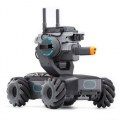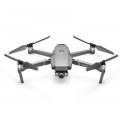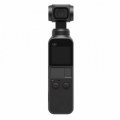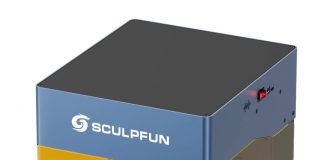DJI Digital FPV Remote Controller
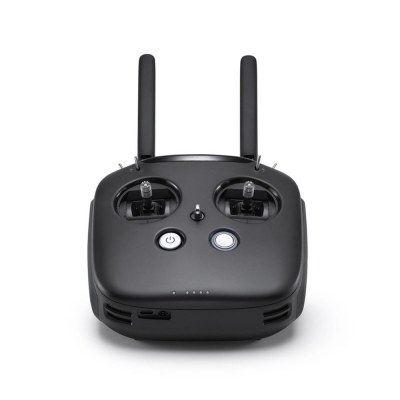
-
1: Capacity: 4920 mAh
-
2: Operating frequency: 5.725 - 5.850 GHz
-
3: Operating current / voltage: 0.6 A @ 7.6 V
-
4: Battery type: LiPo 2S
-
5: Voltage: 7.6 V
DJI Digital FPV 5.8GHz 7ms Ultra Low Latency Remote Controller Transmitter for RC Drone
DJI is known for its products around the image, flying with its drones, on the ground with hand platforms. A little less for its products intended for the world of FPV racing and immersion flights. However, he had already marketed OcuSync Air and the DJI Goggles Racing Edition mask, a kit to equip racers with digital and HD video feedback. It was not a revolution since a competitor was already positioned, Amimon with its ProSight HD (see here). Neither OcuSync Air nor ProSight HD has been successful. Amimon seems to have thrown in the towel for this type of product.
But DJI has continued to build on its momentum and improved this technology, rubbing it against real-life conditions on competitions in China. It is there that we have seen them in action on several occasions (see here). While real-time HD projects seemed a little forgotten, DJI is back on the attack with the Digital FPV System. To put it simply, this is the evolution of OcuSync Air, taking into account criticisms and feedback.
It is the combination of the DJI FPV Camera, DJI FPV Air Unit Module (video transmitter), DJI FPV Goggles (immersion glasses) and DJI FPV Remote Controller (radio control). The basic version includes the camera and the transmitter (Air Unit Module) to be placed on board a racer, plus the mask to receive the images. For a more complete version, the Air Unit Module can be used as a radio receiver, in this case it is to be used with the remote control. What is the advantage of a digital video link instead of an analog one (as most racers use it)? It provides an image with better resolution and less snow-like noise.
The images filmed by the camera on board your racer are transmitted to the mask in a resolution of 1280 x 720 pixels at 120 images per second! And latency, since it is the crux of the matter for real-time video transmission? The 720p/120 mode, which emphasizes latency over picture quality, is called “Low Latency” by DJI, which relies on 28 milliseconds. Another mode, called “High Quality”, offers a 720p return at 60 frames per second with 40 milliseconds latency. If the values promised by DJI in “Low Latency” mode are verified, nervous control in immersion will be possible! How does the HD Low Latency (HDL) technology used by DJI work? “It uses a two-way communication system to stabilize the connection signals, allowing pilots more flexibility when flying in difficult areas. Another tool, Focus Mode, allows data to be concentrated towards the center of the image, which makes it possible to keep a correct visual where it is most important if the link deteriorates.
It is based on a 1/3.2” CMOS sensor for 4 million pixels, with a 2.1 mm lens and a rolling shutter. It allows an ISO range between 100 and 25600 and an angle (FOV) of 150°. The dimensions ? 2.21 x 2.11 x 2.01 cm for a weight of 8.2 grams. It is possible to stay in the default “Standard” mode, or to prefer the “Racing” mode. It increases the contrast to better see the environment, especially when there are changes in brightness. The “LED” mode reduces the noise of dark images and softens color saturation to reduce the impact of LEDs in a night path.
It comes in the form of a small closed box that measures 4.4 x 3.78 x 1.44 cm and weighs just under 40 grams. It operates in the 5725 to 5859 MHz digital range, with different power depending on usage in Europe (CE) or the rest of the world (FCC / SRRC). DJI ensures that it is possible to use 8 of them simultaneously without them interfering with each other. On-board recording is possible on a microSD card. DJI indicates that it is expected to be 5 milliseconds longer when the recording is activated on board the racer. This recording is not limited to 720p, the images are stored in 1080p at 60 frames per second, with H.264 encoding including sound.
The data sheet indicates that it is 700 metres at best in EC mode, i.e. in Europe. And a maximum of 4 kilometers in FCC and SRRC modes. Can the FCC mode be chosen and if so, how? This is not indicated in DJI’s presentation. In the absence of GPS as on the brand’s flying cameras, it can be assumed that the adjustment is manual. The Air Unit must be supplied between 7.4 V and 17.6 V, i.e. with 2S to 4S. It is necessary to connect the 2 antennas, via an MMCX connector and make sure to secure the sockets. Note that the video receiver is coupled with a radio transmitter, to be coupled with Betaflight v4.1.0 or later.
The FPV Air Unit transmits digitally, but since it operates in the same frequency range as the analogue 5.8 GHz, it is likely to interfere with analogue video links. And vice versa. Note that the FPV Air Unit monitors its temperature and switches to “Low Power” mode if it becomes too high, which reduces the number of frames per second (to 30), increases latency (up to 60 milliseconds) and prohibits video recording. DJI recommends facilitating air circulation to naturally cool the FPV Air Unit in flight.
They measure 18.4 x 12.2 x 11 cm (without antennas) and weigh 415 grams in working order (without battery). The vision is based on two 2-inch LCD screens with a resolution of 1440 x 810 pixels, with a refresh rate of 120 Hz. There is no battery inside the glasses, they must be powered by a 7.4 V to 17.6 V (2S to 4S) source. The glasses are designed to receive images from the Air Unit Module transmitter. They are not compatible with the transmitters of previous devices in the DJI ranges.
It is possible to record the flight images on a microSD card to be inserted into the glasses. The definition is 720p at 60 fps, which can be replayed immediately. The FOV of the glasses is 54°, adjustable to be smaller, up to 30°, for those who have difficulty flying with a screen too large. The interpupillary distance is adjustable, between 56 and 70 mm. An “Audience” mode is provided by the glasses: it allows a second pair of glasses to connect to the FPV Air Unit, but without a bidirectional protocol.
DJI was not going to stay on the failure of his first product for FPV racing, especially since professional sequences made from racers and integrated into more classic images are more and more frequent. DJI’s dream is probably to be able to organize drones races with HD video feedback to ensure the show, and to convert all FPV racing drivers to digital images. Is the Digital FPV System expensive? Yes, that’s the least we can say. Is this the right price for a digital video return that is finally effective? JohnnyFPV, one of the best pilots in the world, came back from Iceland (at DJI’s request) with superb images and seems convinced. Of course, until I have had this product in my hands, I will not give an opinion: I ask to see! I also ask to be seduced, because I have been waiting for a digital tool that is effective for a long time!
SPECS
Product Details
| Features |
The flying glasses and the transmission parameters can be set remotely. With the use of flying glasses and the sky side, there is no need to purchase additional receivers. Ultra Low Latency (>7ms) Between Controller & Air Unit 4KM Control Distance High Capacity Battery Ensures Longer Use Time Closed-Loop Software Operation |
| Specification |
Brand: DJI Item name: FPV Transmitter Weight: 765g Operating frequency: 5.725 - 5.850 GHz Maximum effective distance of the signal (no interference, no occlusion): FCC/SRRC: 4 km; CE: 0.7 km Transmit Power (EIRP): FCC: <30 dBm; CE: <14 dBm; SRRC: <19 dBm Operating current / voltage: 0.6 A @ 7.6 V Operating ambient temperature: 0°C to 40°C (32°F to 104°F) Charging ambient temperature: 5 ° C to 40 ° C (41 ° F to 104 ° F) DJI FPV remote control smart battery (WM37 - 4920 mAh - 7.6 V) Battery type: LiPo 2S Capacity: 4920 mAh Voltage: 7.6 V Energy: 37.39 Wh |
REVIEWS
Disclaimer Note
Ratings are based on objective reviews from our users.



